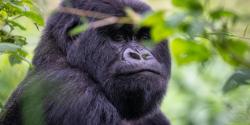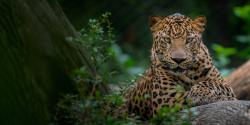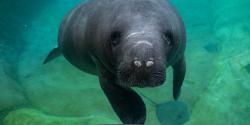If you’ve ever strolled through Adventure Cove at the Columbus Zoo and Aquarium, you’ve probably heard the loud, playful barks of our California sea lions. But did you know we also have three incredible harbor seals? Today, as we celebrate International Day of the Seal, we’re shining a spotlight on these fascinating marine mammals!
Seals in Action at the Zoo Today!
As we celebrate International Day of the Seal, our team is hosting special activities at the Zoo! Guests visiting Adventure Cove are enjoying training sessions, live fish feedings, a jello toss, and interactive learning stations about seal conservation. While you may not be here in person, we’d love to introduce you to our three harbor seals—Keaton, Sloane, and Ferris. They may not be as vocal as our sea lions, but they’re just as captivating! Keep reading to see each one of these beloved seals.
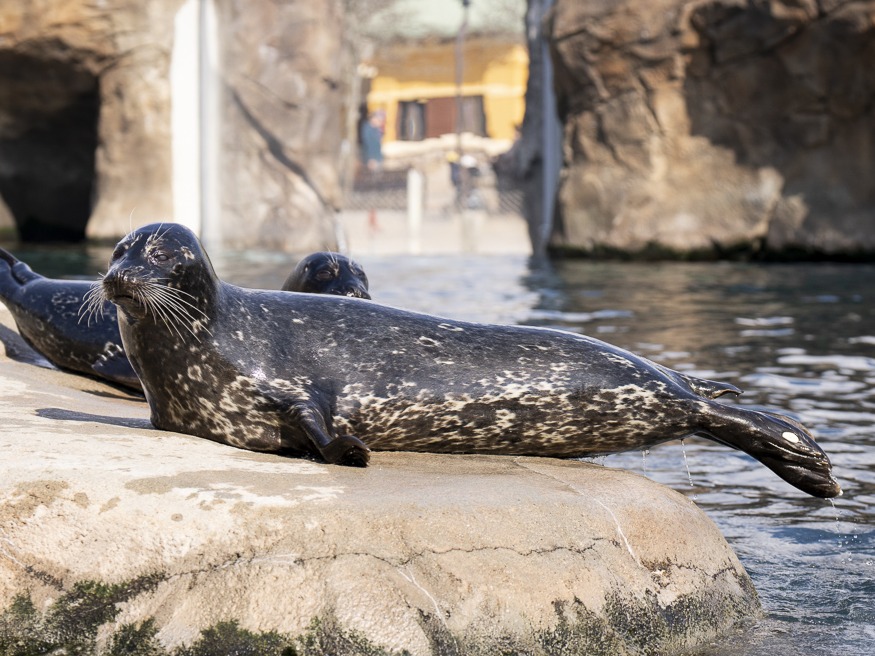
Seals, Sea Lions, and Walruses—What Are They Called?
Seals belong to a group of marine mammals called pinnipeds, which means “flipper-footed.” They share this category with sea lions and walruses, but seals have a few unique characteristics. Unlike sea lions, seals lack external ear flaps—you’ll only see small pinholes on the sides of their heads. They also can’t rotate their hips to walk on land, so instead of strolling on all fours like a sea lion, seals move in a wiggly motion called “galumphing” (think of an inchworm making its way forward).
Built for the Deep
Harbor seals are perfectly adapted to life in the water. With a top swimming speed of 12 mph, they rely on their hind flippers for propulsion and their front flippers for steering. They can dive to depths of over 1,000 feet and hold their breath for up to 30 minutes! To conserve oxygen, their heart rate slows to just five beats per minute while diving. Plus, their thick blubber not only keeps them warm but also provides an energy reserve when food is scarce.
Where in the World Are Harbor Seals?
Harbor seals are found along the western coast of the United States, from Baja California, Mexico, all the way to the Bering Sea. They’re homebodies by nature, typically staying within 30 miles of where they were born. However, some individuals have been tracked traveling over 450 miles—often to give birth in a safe location or chase after seasonal fish runs.
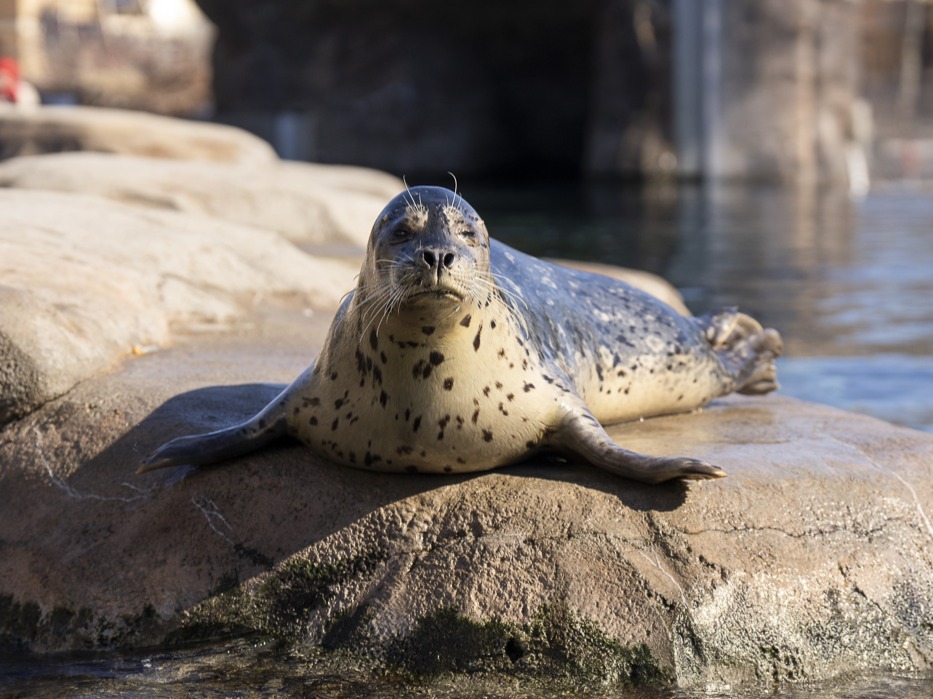
Sealed with a Fun Fact
- Harbor seals use their vibrissae (whiskers) to detect vibrations in the water, helping them track prey.
- They spend up to 85% of their day foraging for food.
- Unlike sea lions, harbor seals are mostly quiet—unless their personal space is disturbed!
- There are five recognized subspecies of harbor seals.
- They can live in both saltwater and freshwater environments, including rivers and lakes.
- They eat about 5% of their body weight in food daily—unless they’re fasting.
Protecting Seals for the Future
International Day of the Seal was first declared by the U.S. Congress in 1982 to raise awareness about the threats seals face—particularly from hunting. While harbor seals are currently classified as a species of "Least Concern" by the International Union for Conservation of Nature (IUCN), they still face challenges like habitat loss, pollution, and entanglement in marine debris.
You can help protect seals in simple but impactful ways:
- Choose sustainable seafood. Use the Monterey Bay Aquarium’s Seafood Watch program to ensure your seafood choices support healthy ocean ecosystems.
- Reduce plastic waste. Cutting down on single-use plastics and recycling helps prevent pollution that can harm marine life.
- Get involved. Volunteering for waterway cleanups can stop debris from reaching our oceans and endangering marine animals.
At the Columbus Zoo and Aquarium, we actively support marine mammal conservation by donating to the Marine Mammal Center in Sausalito, California. Their mission—"to advance ocean health through rescue, rehabilitation, research, and education"—aligns with our commitment to protecting wildlife. By visiting the Zoo, a portion of your ticket purchase supports conservation efforts, including those that benefit harbor seals and other marine animals.
Even if you can’t be here with us today, we’re glad you’re celebrating seals with us! Every step we take to learn more about these animals and protect their ocean home makes a difference.
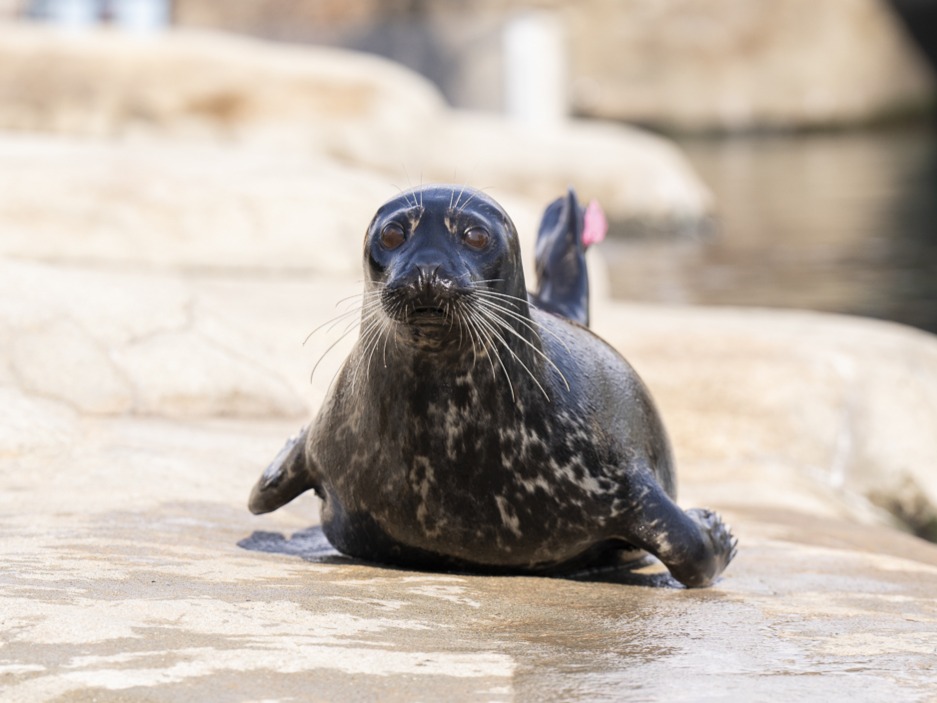
Learn More About Seals Visit the Adventure Cove region at the Zoo

